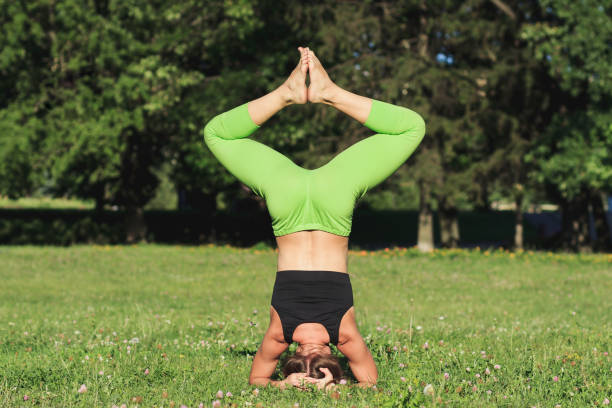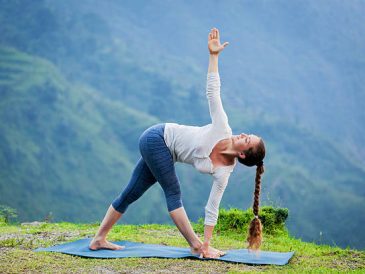Being upside down is a great experience. Headstand, or Sirsasana, engages the upper arms and the core, teaches us patience, and invigorates the body because gravity pulls blood to your head. It’s called the King of Asanas due to its many benefits, so it’s worth trying to include in your practice.
Here are some tips on how to align yourself for Headstand and your journey towards the full position.
Organizing Your Base
It’s important to make sure that the base of your pose looks solid. Make sure your arms are shoulder-width apart. Start by holding your elbows in both hands. Then, keep the elbows where you are while moving the forearms forward and interlacing the fingers.
It is possible to place the pinky on the bottom of your hands. This will prevent it from getting too much pressure when you begin to put weight on your arms. Try to keep your wrists straight so that they don’t turn too much inward or outward.
Keep a belt on your upper arms so that you can keep the distance between the forearms at the right level.
Let’s Begin With a Dolphin
All new things take time and are best done in small steps. You don’t have to aim for the full Headstand immediately if you’ve never done one before. A Headstand is not something that happens overnight.
Prepare for Headstand by doing a few prep poses. Dolphin Pose helps you build upper body strength and get used to carrying weight on your arms. To do the dolphin pose, place your forearms flat on the floor with your arms in the sho-dolphin pose.
You can also interlace your fingers as you stand shoulder-width. Try to keep your toes close to the elbows and breathe comfortably for six to eight breaths.
This is something you can do for a while until you feel comfortable. You can go further by lowering your head between your arms and bringing the crown of your head to the floor. Headstand is a name for a position where you’re not standing on your own head. Instead, your weight should be primarily on your arms.
Keeur’s shoulders are strong, so lift them up away from your ears.
Stacking Up Yourself
As you rise into the position, your head, shoulders and hips should all be stacked together. This does not need to be done; it is a one-in-one go. Take it slowly.
To begin, start in Dolphin Pose by bringing your toes up to the elbows. Then, tuck one knee into the chest with the toes facing the sky. Continue until you feel comfortable. Finally, tuck both legs in so that your weight is all on your arms while your legs remain bent. Align your hips, shoulders and head.
When you’re ready, lift your legs high and align the feet with your hips.
Coming Out with Control
As you come out of the pose remember to move slowly.
Straighten your legs so that your toes are touching the ground. Come down into Child’s Pose by lowering your knees slowly to the floor.
Contraindications
Avoid the pose if you have a headache, neck or back injury, or high blood tension.
Inversions are best avoided if you’re menstruating. You can do Legs-Up The Wall pose instead of Viparita Karani during menstruation. the
Inversions help us overcome our fear of falling and change our perspective on the world. Enjoy the benefits of this pose for both your mind and body.




